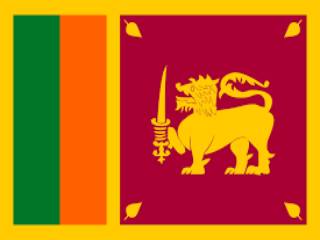Shravan Shuddha Dwitiya, 5111
Read: AMU plans in West Bengal stits misgivings
By Prafull Goradia
It is surprising that the Union Budget has been passed by Parliament without the slightest protest by the Opposition. Rs 25 crore has been provided for setting up Muslim universities in Murshidabad at one end of India and Mallapuram at the other, on lines similar to the Aligarh Muslim University.
The AMU, many years later after it was found, proved to be the ideological cradle of separatism in India. Sir Aga Khan, in his memoirs, has given full credit to the AMU for inspiring the creation of Pakistan. In his own words: “Often in a civilised history a university has supplied the springboard for a nation’s intellectual and spiritual renaissance. In our own time, it has been said that American missionary college in Constantinople led to the re-emergence of Bulgaria as an independent sovereign nation. Who can assess the effect on Arab nationalism of the existence of the American university of Beirut. Aligarh is no exception to this rule. But we may claim with pride that Aligarh was the product of our own efforts and of no outside benevolence; and surely it may also be claimed that the independent, sovereign nation of Pakistan was born in the Muslim University of Aligarh” (The Memoirs of Aga Khan, Cassell and Company, London, 1954).
Shortly before the partition, Qaid-e-Azam Mohammad Ali Jinnah on a visit to the AMU had complimented its teachers and students for the same cause. The Muslim League was founded far away in Dacca in 1906 and its general secretaries for the first 20 years were alumni of the AMU.
It stands to reason that the two proposed spawns of the AMU could play a similar separatist role. It is relevant to recall that Viceroy Lord Minto, while helping to draft the Morley Minto Reforms of 1909, had rejected the Muslim demand for setting up their own university at Aligarh for fear that it could encourage a fissiparous movement.
Recall what Mr Shaheed Suhrawardy, who eventually went on to become the Prime Minister of Pakistan, wrote as an Indian Muslim on September 10, 1947 from Calcutta to Choudhry Khaliquzzaman said: “Personally I think that Pakistan has provided a homeland for the Muslims living in those majority areas, but not a homeland for the Muslims of India. The Muslims in the Indian Union have been left high and dry and must shape their own destiny and the question arises what should be our future organisation.” He had added: “The Muslims should form themselves into strong pockets. In my opinion this should be done even with the best cooperation in the world with the Hindus. It is politically desirable as well as necessary for survival and also culturally desirable.”
Remember, in 1947, Murshidabad district with 57 per cent Muslim population got included in India on grounds of geographical contiguity. In exchange, the Hindu majority district called Khulna went to East Pakistan. Attempts to squeeze out Hindus from the area continue even now. One recent symptom of this process is the riot in Murshidabad which claimed several lives. The issue was that the Friday namaz was needed in the local Government school; whereas celebration of Saraswati puja was not permissible. This is despite the fact that the students at the school belong to both the communities.
What the Budget proposes could lead to a throw back on the brainchild of Chodhury Rahmat Ali, the Cambridge scholar, who in July 1933 proposed the creation of Pakistan in the north-west and Bang-I-Islam comprising Bengal and Assam. In his dispensation, the Nizam’s Hyderabad was to become Usmanistan. Rahmat Ali had also expressed surprise as to why Muslim provinces should be forced into the Indian Federation under the 1935 Government of India Act when simultaneously Burma was being separated from the sub-continent.
Syed Abdul Rashid of Usmania University had, in several pamphlets published in 1938, gone further than Rahmat Ali. In addition to these three separate States, he wanted a fourth one called Moghulistan extending from the border of Patiala to Lucknow with its capital at Delhi. Most of these facts were reported in The Constitutional Problem in India by R Coupland (Chapter XVIII, OUP, London, 1944). He ended this chapter with the words, “Most Muslims would rather split India into several sovereign states than submit to a Hindu raj.”
With the birth of Pakistan, India lost about 30 per cent of its territory. Today there is an open claim that 121 districts of the country have Muslim concentrations. Last year 523 branches of public sector banks were opened in these districts. This year there is a programme to establish yet another 524 branches. The Reserve Bank of India has reserved 13 per cent of all loans for the minority, in this context, an euphemism for Muslims. It is proudly claimed that nearly Rs 83,000 crore of all loans and grants have found their way into the pockets of Muslims. These are conceded by the banks as “Credit Risk Group” which would imply that not all the loans are expected to be repaid.
Source: Daily Pioneer
Also See
 |
Hindu genocide in Kashmir & Bangladesh
Online photo exhibition of Hindu genocide and temples destruction in Kashmir by local Muslims. Series of exhibitions being arranged. |
 |
Achalpur Riots: Kashmir in MaharashtraPhoto evidence of Muslim terrorism; Kashmir in Maharashtra… |




